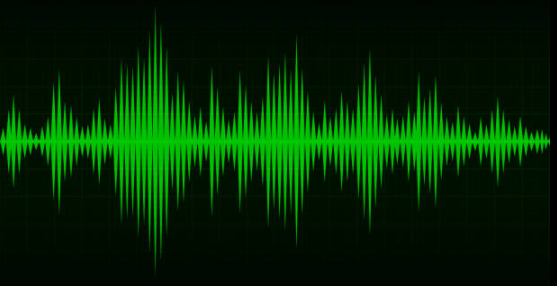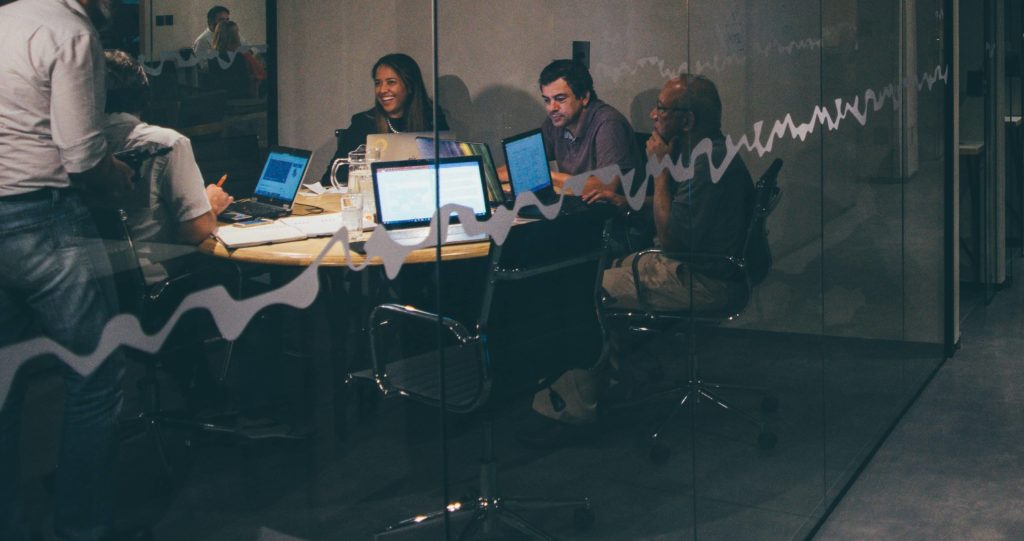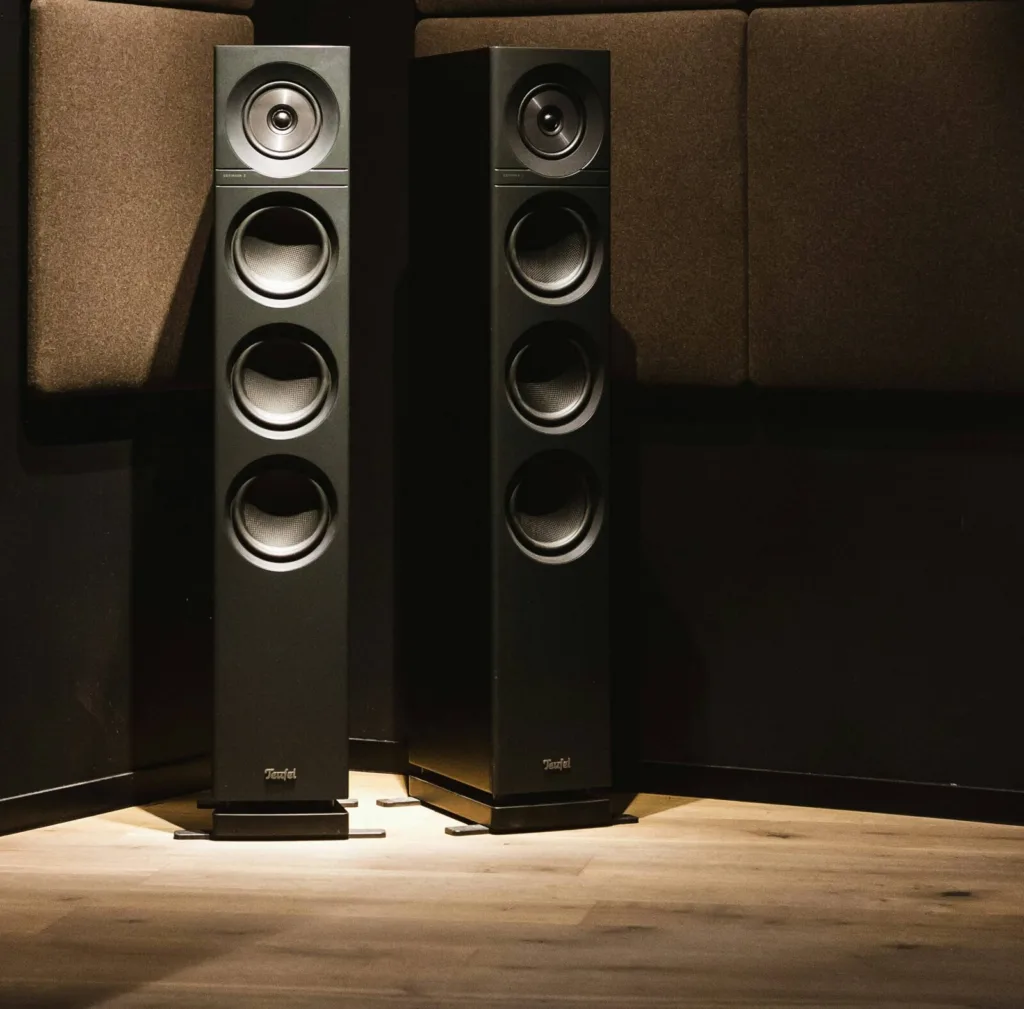Sound Masking and Noise Management By Lencore

One size does not fit all when it comes to effectively managing noise problems, and that’s why Lencore offers a wide range of simple set-it and forget-it fully customizable noise management solutions.
You may love your noise canceling headphones when you’re on a plane and wish to shut out the world around you, but the way to achieve focus and productivity in your professional environment requires a different set of noise reduction techniques. That’s where Lencore’s state of the art sound masking comes in.
Sound Masking with Lencore’s Green Sound®
Our scientifically formulated Green Sound® employs a unique noise reduction algorithm and is calibrated to ambient speech frequencies at a level that makes intentional conversations in close proximity clear, while reducing noise from background distractions through advanced sound masking. You can achieve this uniform sense of focus anywhere your work requires, from a single room home office to a multi-floor high rise.
As one of the top providers of sound masking speaker systems for both commercial and institutional uses, we believe that sound masking should deliver speech privacy and comfort within the designed environment to allow collaborative and individual workspaces to co-exist. Individuals will produce their best work in a non-stressful, comfortable environment and without proper acoustics this environment is unattainable.
Sound masking systems, when properly designed, dynamically improve comfort and collaboration in the workspace by gently raising the ambient background sound uniformly with a clean, consistently random, broadband, non-intrusive sound. This can also serve as a speech privacy system that makes it more difficult for outside listeners to hear confidential conversations, protecting speech privacy.
What is Sound Masking?
Sound Masking is the process of adding unobtrusive background sound to reduce noise distractions, protect speech privacy and increase comfort within the environment to allow collaborative and individual workspaces to co-exist.
You may have experienced something like the sound masking effect when running water at the kitchen sink while trying to talk to someone in the next room or while at the beach and trying to listen to a conversation on the next blanket. You can tell the other person is speaking, but it is difficult to comprehend what they’re saying because the running water and crashing waves have raised the background sound level in your area.
Distractions in the workplace can come in a variety of forms. Loud phone conversations, collaborative talk, an impromptu call for a meeting –– all these things can break an employee’s focus.
However, some environments are so silent, so devoid of distraction that even the smallest disturbance can become a big issue. Loud, noisy environments aren’t ideal, but neither are library-quiet workspaces that make people feel self-conscious.
Sound Masking is specifically engineered to cover up the frequency of human speech and make conversations less distracting. Simply put, sound masking reduces how far away conversations can be heard and understood by others. It helps achieve the right “signal to noise” ratio by raising the ambient background sound to a level called “speech privacy.” If implemented properly, sound masking should also provide comfort, improving overall concentration and boosting productivity.
How Does Sound Masking Work?
Sound Masking does not cancel sound, but rather covers up unwanted noise in an environment, thereby making the space seem quieter and providing both speech privacy and comfort. The intention of sound masking is to make conversations heard from a distance more difficult to understand and less distracting.
Sound is gently introduced into the space through a series of speakers that are controlled from an electronic device. This sound, which is similar to the ‘hush’ of an air-conditioner, fades into the background and is set at a level slightly above indirect speech. This scientifically designed sound then makes conversations less distracting and allows you to focus on your work. The sound produced is engineered to be comfortable to the human ear, ensuring it fades into the background hum of the workplace and masking sound without causing discomfort.
As the corporate world has shifted to a hybrid home/office split, spaces that are less than full may feel eerily quiet without the normal hustle and bustle of daily activity. Sound masking, in this case, will make a space feel more comfortable because the act of adding noise to the space will remove that ‘eerie’ feeling of reduced occupancy.
What Industries Need Sound Masking?
When speech privacy and controlling noise are your chief concerns, Lencore’s solutions are ready to win your confidence so your conversations remain confidential.
Confidentiality sound masking is crucial in protecting sensitive and privileged information such as attorney-client information, government secrets, confidential business plans, and sensitive patient information.
Government Compliance & Trust: Lencore’s sound masking products comply with the Buy American Act (BAA) and Trade Agreements Act (TAA), reinforcing our commitment to secure, U.S.-manufactured solutions for federal and government use. By ensuring compliance, we support the protection of sensitive data and provide reliable technology trusted by government organizations, hospitals, and financial institutions globally.
Government organizations, top-tier hospitals, and financial institutions all around the world depend on Lencore’s technology to keep information safe and secure, and clients and patients comfortable and providing 5-star reviews.
We have sound masking solutions to fit environments of every size and budget.
See How Our Sound Masking Solutions Work in Different Environments:
- Single Room & Small Areas – In single rooms and small areas, sound masking solutions can be highly effective. Proper placement of sound masking speakers is crucial to ensure similar acoustic room responses in each zone. This helps in achieving optimal sound masking results.
- Small to Medium-sized Environments – For small to medium-sized environments, the approach to noise reduction must be tailored to the specific needs of the space. Calculations for the placement of sound masking speakers should consider the type and height of the ceiling or plenum. This ensures that the number and placement of speakers are optimized for effective sound masking.
- Enterprise System – Enterprise systems require a comprehensive strategy to manage noise across large areas. Varying factors such as room size, ceiling height, and the type of environment play a significant role in determining the number and placement of sound masking speakers. Properly placed speakers ensure consistent acoustic performance throughout the enterprise.
FAQ TEST Question: What combination of acoustic treatments, audio equipment, and sound-masking techniques can I use to create a calm, sleep-friendly atmosphere in my bedroom?FAQ TEST Answer: Start by treating the room itself. Install acoustic foam on key parts of the wall and ceiling to reduce echo and control architectural acoustics within the enclosure. This passive treatment works hand in hand with active solutions. For gentle background music or lullabies, set up a compact hi-fi speaker system driven by a low-wattage amp or integrated amplifier; connect your phone or tablet through the headphone jack for easy control. If you prefer continuous sound therapy, a white noise machine or pink noise masker can help you drift off, while modern devices often include dedicated lullaby tracks for infants and adults alike. For deeper immersion, choose a small stereo sound setup or an all-in-one sound system that fits neatly beside the bed yet delivers a balanced soundproof experience without shaking the walls. By combining proper sound proof materials, a thoughtfully matched sounds system, and targeted masking sources, your bedroom can become a restful sanctuary with technology and acoustics working together.
Related Sound Masking Articles
Sound Masking: How to Manage Noise in ICU Rooms
Sound Masking: How to Manage Noise in ICU Rooms In the busy world of Intensive Care Units (ICU), where taking care of patients is the top priority, the environment is...
Sound Masking Vs. White Noise
How is Noise Cancellation & White Noise Different from Sound Masking? There is a common association between noise cancellation and sound masking, specifically as it relates to white noise in...
Sound Masking vs. Soundproofing
Sound Masking 101: The Difference Between Soundproofing and Sound Masking Managing noise is not just a preference but a necessity for maintaining productivity and privacy. The concepts of soundproofing and...
Sound Masking for Incidental Disclosure & HIPAA
Preventing Incidental Disclosure & HIPAA Violations with Sound Masking In the healthcare industry, protecting patient privacy and preventing accidental disclosure of Protected Health Information (PHI) are paramount concerns. Maintaining a...
Sound Masking 101: Is Sound Masking Worth it?
Sound Masking 101: Is Sound Masking Worth it? Silence can be deafening. How do you create an environment that is comfortable and productive? The answer is simple: Sound Masking. What...
Sound Masking 101: How Much Does Sound Masking Cost?
Sound Masking 101: How Much Does Sound Masking Cost In today’s world of open offices and team-based work settings, the importance of a sound-managed environment is paramount. Discover sound masking,...
Sound Masking 101: History & Advancements in Materials and Designs
Sound Masking 101: History & Advancements Noise distractions in the workplace can greatly reduce productivity and privacy. With the rise of open office layouts and hybrid work environments, sound management...
Sound Masking 101: Common Applications of Sound Masking
Sound Masking 101: Applications of Sound Masking Sound masking is the process of adding a low-level, unobtrusive background sound specifically engineered to mask unwanted noise. This technique is vital in...
Sound Masking FAQs
Does sound masking really work?
Sound masking works very well and is based on the simple premise that louder sounds cover (mask) quieter sounds. The way in which this is achieved and its level of effectiveness can vary greatly depending on the selected solution. Lencore provides the most effective and comfortable sound masking solution available with our scientifically formulated Green Sound.
What is the sound masking method for controlling noise?
The sound masking method is one of the most effective noise reduction techniques based on the concept that louder sounds cover (mask) quieter sounds and controls the sound level.
Sound
masking
works by introducing a blend of sonic frequencies (white, pink, and brown noise) into the environment at a level just above indirect speech and is proven to make environments more private and less distracting by effectively removing background noise.
What is the proper sound masking level?
The proper level of sound masking varies based on a given environment. Ideally, sound masking should be tuned at a level just above indirect speech, which in most environments ranges from 42-45dB, meaning the masking level should be set at 46-48dB measured at 4 feet from the floor (average seated listener position).
What are sound masking techniques?
Sound masking is the addition of an unobtrusive background sound, like airflow, or waves on a beach. This reduces the intelligibility of human speech and reduces distractions. Sound Masking is specifically engineered to cover up the frequency of human speech and make conversations less distracting. By controlling the acoustics of a space, you control both productivity and comfort.
What is the goal of sound masking?
The goal of sound masking is to introduce the addition of an unobtrusive background sound, like airflow, or waves on a beach.
Sound masking
will significantly reduce the intelligibility of human speech and reduces distractions. If implemented properly, sound masking should also provide comfort, improving overall concentration and boosting productivity.
When should a sound masking system be adjusted?
A sound masking system rarely needs to be adjusted. However, Lencore’s system can auto-adjust based on a programmable timer in our software. More importantly, the systems that utilize microphones to “listen” for background noise pose a security risk from eavesdropping.
Can you hear sound masking?
Yes, sound masking, when properly designed, dynamically improves comfort and collaboration in the workspace by gently raising the ambient background sound uniformly with a clean, consistently random, broadband, non-intrusive sound. The scientifically engineered sound is amplified through individual speakers installed above or in the ceiling throughout the space to create a uniform field of sound that ensures temporal and spatial uniformity.
What is the sound masking system in hospitals?
Many hospitals today are incorporating sound masking technology to help control noise levels in their environments. When properly designed, sound masking not only enhances privacy and security but also creates a more comfortable and productive environment for patients and healthcare professionals alike. Studies have shown that sound masking can lead to a 38% reduction in patient stress levels (source: The New England Journal of Medicine).
What are sound masking techniques?
Scientifically engineered sound is amplified through individual speakers installed above or in the ceiling throughout the space to create a uniform field of sound that ensures temporal and spatial uniformity. The
sound masking
system “fills” the plenum and filters down into the space below, without phasing, to gently raise the background sound level. As a result, noise from overheard speech becomes less intelligible.
What is the difference between soundproofing and sound masking?
Sound masking’s purpose is to cover the speech as a component to
sound proofing
so speech is private. Sound proofing for speech privacy may have several diverse components–absorptive materials like insulation or blocking materials like sealants. Sound proofing is held to a higher expectation and measurement (think waterproof vs water resistant).
Sound Masking: How is it different from white noise?
Sound masking is specifically designed to cover speech and other noises for privacy, while
white noise
is a consistent, unstructured noise used mainly for relaxation or to
mask
sounds randomly.
What places can benefit from sound masking technology?
Restaurants, law firms (attorneys), a class room, retail banking, call centers, an apartment building, a hospital, a college campus building, a home theater, a coffee shop, and even casinos can benefit from the
Lencore
sound masking technology to control noises and improve room acoustics. The
sound masking technology
can be used for different purposes to help with noise control, contact us, talk with your architect or discuss with interior designers for more details of what is right for you.
What is the difference between sound masking and white noise?
Sound masking
and white noise are both used to reduce distractions, but they are not the same.
Sound masking
is specifically engineered to cover human speech frequencies, making conversations less intelligible and creating a more comfortable and effective sound environment. White noise, on the other hand, is a consistent, random sound across all frequencies and may not be as effective for speech privacy.
How is sound masking installed in existing buildings?
Sound masking systems
can be easily installed in existing buildings by placing speakers above ceiling tiles or mounting them strategically throughout the space. The system is then calibrated to match the acoustics of the area, ensuring effective coverage without disrupting the current setup.
Does sound masking eliminate all noise in a space?
No,
sound masking
doesn’t eliminate all noise. Sound masking adds a subtle background sound designed to
mask
conversations and other distracting noises, making them less noticeable. This helps create a more acoustically comfortable environment without eliminating beneficial background sounds entirely.
If a customer wants to purchase sound masking technology , how much would it cost?
It depends on the needs of the specific customer and local regulations. If the
sound masking
system
is related to a architectural design for a commercial building, then, the pricing would be different than for schools.
Is noise masking the same as sound masking?
While noise masking and
sound masking
are similar, noise masking generally refers to the technique of adding ambient sound to cover background noise, while
sound masking
specifically targets speech frequencies to enhance privacy.
Refer to our sound masking products guide for more information on which may be best for your space, or check out our paging systems for additional paging and audio capabilities.








